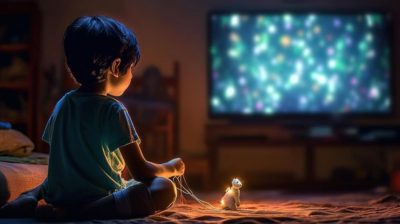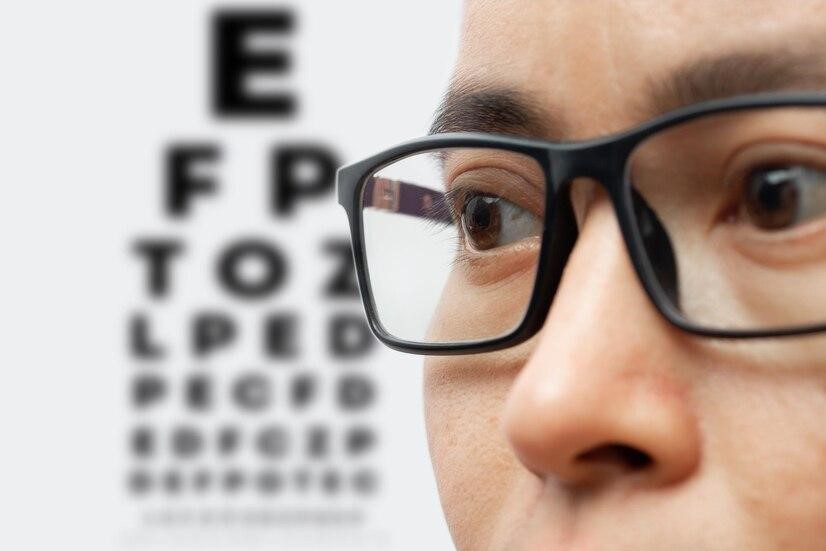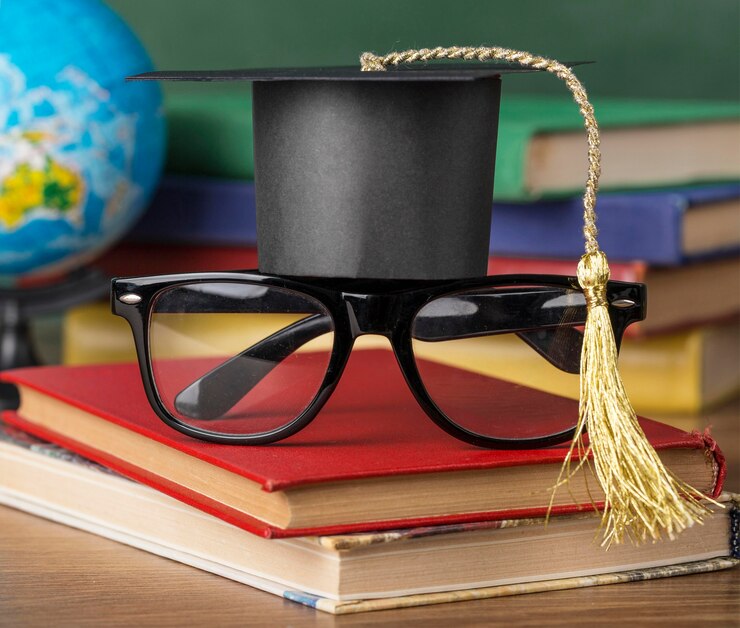In the digital age, where screens reign supreme and technology smoothly integrates into every part of our life, a troubling trend is emerging: the rise of myopia in youngsters. This phenomena, aptly named “The Myopia Boom,” shines light on the tremendous influence that screens have on our children’s vision. As smartphones, tablets, and laptop computers grow more common in classrooms and households, the distinction between virtual and reality blurs, quite literally. Join us as we look at how screens are changing the landscape of childhood vision and how we may help our children see a clear route forward in an increasingly screen-centric environment.
What is Myopia?
To put it simply, myopia, also known as nearsightedness, is a common eye ailment in which a person can see adjacent objects well while distant objects appear blurry. This occurs when the eyeball is too lengthy or the cornea (the eye’s transparent outer layer) is overly curved. As a result, light that enters the eye concentrates in front of the retina rather than directly on it, making distant things look out of focus. Myopia can frequently be corrected with glasses, contact lenses, or refractive surgery to help the eyes focus and view distant objects more clearly.
Myopia, or the need for corrected vision to focus or view distant things, has increased dramatically in recent decades. Some consider myopia, or nearsightedness, to be an epidemic.
According to optometry researchers, if current trends continue, over half of the global population would require corrective lenses to compensate for myopia by 2050, up from 23% in 2000 and less than 10% in other nations.
How does myopia develop?
Myopia, often known as nearsightedness, occurs when the eyeball is too long or the cornea (the eye’s clear front surface) is overly curved. These anatomical anomalies enable light to enter the eye and focus in front of the retina rather than directly on it.
Here’s a simplified explanation of how myopia develops:
- In those with myopia, the eyeball is usually longer from front to back. Due to this elongation, light rays entering the eye focus in front of the retina rather than immediately on it.
- Corneal curvature is another element that contributes to myopia. If the cornea is overly curved, light rays can bend too much, resulting in the same result as an extended eyeball, the focal point falling in front of the retina.
- Genetic Factors: Although the specific aetiology of myopia is unknown, genetics plays an important impact. Children who have one or both parents with myopia are more likely to develop it themselves. However, environmental variables such as extended near work (such as reading or using electronic devices) and a lack of outdoor activities can also contribute to myopia development, particularly in genetically predisposed individuals.
- Changes in Eye Growth: Myopia usually appears and increases during childhood and adolescence as the eyes grow and develop. Excessive near labour and restricted outside activities during these important stages of eye development may hasten myopia advancement.
Overall, myopia is caused by a mix of genetic predisposition and environmental variables that impact the eye’s growth and structure, resulting in refractive errors and impaired distance vision.
To know more about myopia and how to slow down the progression of myopia watch this informative video explained by Dr Sumanth Reddy from Dr Agarwals Eye Hospital
|
Did you know? By 2030, health experts expect that one out of every three urban children in India will have myopia. This concerning trend underscores the growing impact of modern lifestyles, such as increased screen time and decreased outside activities, on children’s vision health. Let us work together to promote awareness and make eye care a priority for our children! |
What are the Signs and Symptoms of Myopia?
- Blurred vision while viewing distant objects
- Driving is difficult to see well, especially at night.
- Squinting and straining to view distant objects clearly.
- Frequent headaches, especially after tasks requiring distance vision.
- Eye Strain or tiredness, particularly after extended hours of reading or screen use
- Difficulty seeing the board or screen in class or during presentations.
- Hold books or screens closer than usual to see clearly.
- Rubbing or excessive blinking of the eyes
- Sensitivity to bright lights or glare, which can worsen blurred vision
- Needing to often adjust glasses or contact lenses for clear vision
The Screen-Time Spiral
Screens are everywhere. From smartphones to tablets to laptops, these digital treats have become an essential part of our daily lives, particularly among our tech-savvy youth. But here’s the kicker: too much screen time can be bad for our kids’ eyes. Did you know that gazing at screens for long periods of time can cause eye strain and myopia? It’s as if we’re encouraging visual difficulties into our homes with those flashing rectangles.
So, while some may blame new technologies such as cellphones and excessive “screen time” for harming our eyes, the truth is that even activities as valuable as reading a good book can have an impact on your vision.
|
Did You Know? ● The average Indian child spends approximately 3-4 hours per day glued to a screen. That’s an enormous amount of screen time. ● Screens emit blue light, which can alter sleep patterns and exacerbate eye health issues. |
Is Outdoor Play a Fading Memory?
Remember when youngsters would spend hours outside, soaking up the sun and exploring their surroundings? Well, those days appear to be decreasing quickly. But here’s the thing: outside play is crucial for proper eye development. Exposure to natural light helps maintain our children’s eyes health and can even assist prevent myopia.
Outdoor play provides numerous benefits to children, ranging from improved physical health to increased mood and creativity.
The 20-20-20 Rule: A Sight for Sore Eyes
Okay, we know screens aren’t exactly great for our children’s vision. But don’t worry; there’s a simple solution that can help reduce eye strain and avoid myopia: the 20-20-20 rule. Here’s how it works: every 20 minutes, take a 20-second break and stare 20 feet away. It’s a tiny alteration that can have a tremendous impact on keeping our children’s eyes happy and healthy.
|
The 20-20-20 rule is endorsed by eye care professionals all around the world as an effective technique to decrease eye strain caused by excessive screen usage. |
Eye Examinations: The Visionary Solution
Of course, prevention isn’t always sufficient, which is why frequent eye exams are necessary. Did you know that many cases of myopia can be caught early with a simple eye test? Detecting myopia early can make it much easier to manage and prevent it from worsening.
|
Myopia progression can be reduced with early treatment, such as prescription eyeglasses or contact lenses. |
Seeing the Big Picture
In a screen-dominated environment, it’s easy to miss the effect they can have on our children’s vision. However, by limiting screen time, promoting outdoor play, and scheduling regular eye exams, we can help safeguard our children’s eyes and guarantee they have clear vision for years to come. After all, a world without myopia is one worth exploring.
Eye Examinations: The Visionary Solution
Of course, prevention isn’t always sufficient, which is why frequent eye exams are necessary. Did you know that many cases of myopia can be caught early with a simple eye test? That’s correct: detecting myopia early can make it much easier to manage and prevent it from worsening. So, don’t wait until your youngster is squinting at the chalkboard; arrange an eye check now!
Why Does Staring at Screens Make Your Eyeballs Elongate, and How Can You Stop It?
In today’s digital age, prolonged screen time is commonplace, with smartphones, tablets, and computers dominating our daily lives. However, constant screen time puts our vision at danger, contributing to the development of myopia, or nearsightedness. When we participate in near-work activities such as browsing through social media or reading on screens for long periods of time, our eyes elongate, resulting in clouded distant vision. To fight this condition, it is critical to employ techniques such as the 20-20-20 rule, screen time limits, regular breaks, prioritising outdoor activities, and scheduling routine eye exams. By being proactive about our eye health and making intentional decisions to decrease screen time and embrace healthy behaviours, we can protect our vision and lessen the risk of screen-induced myopia.







